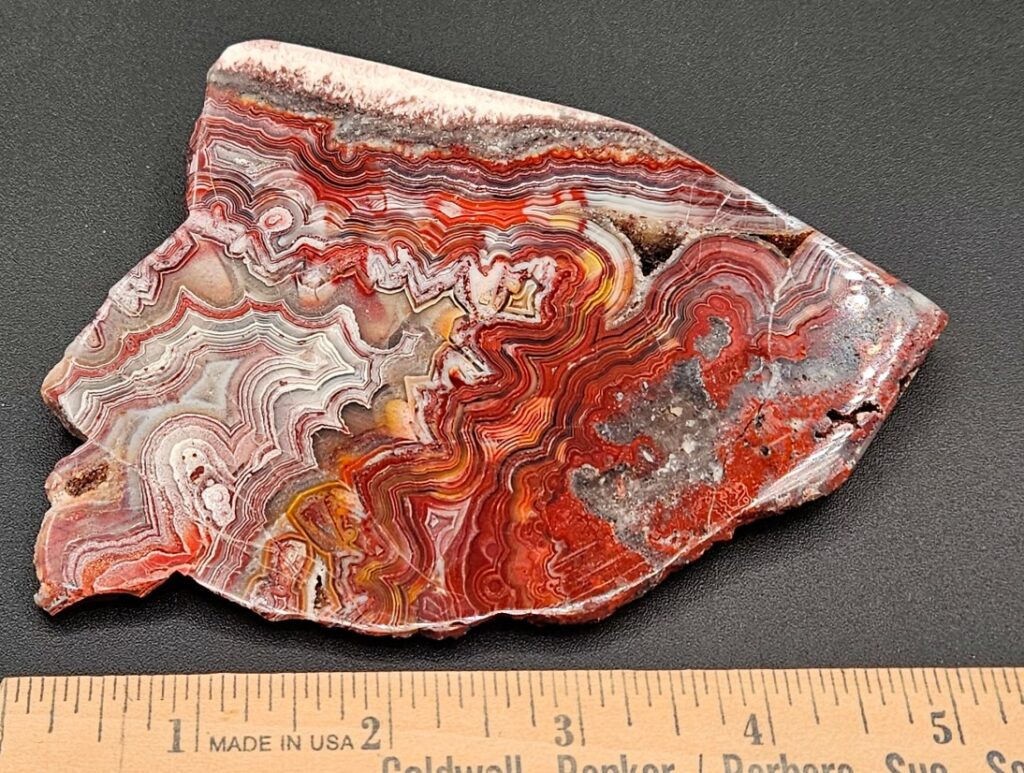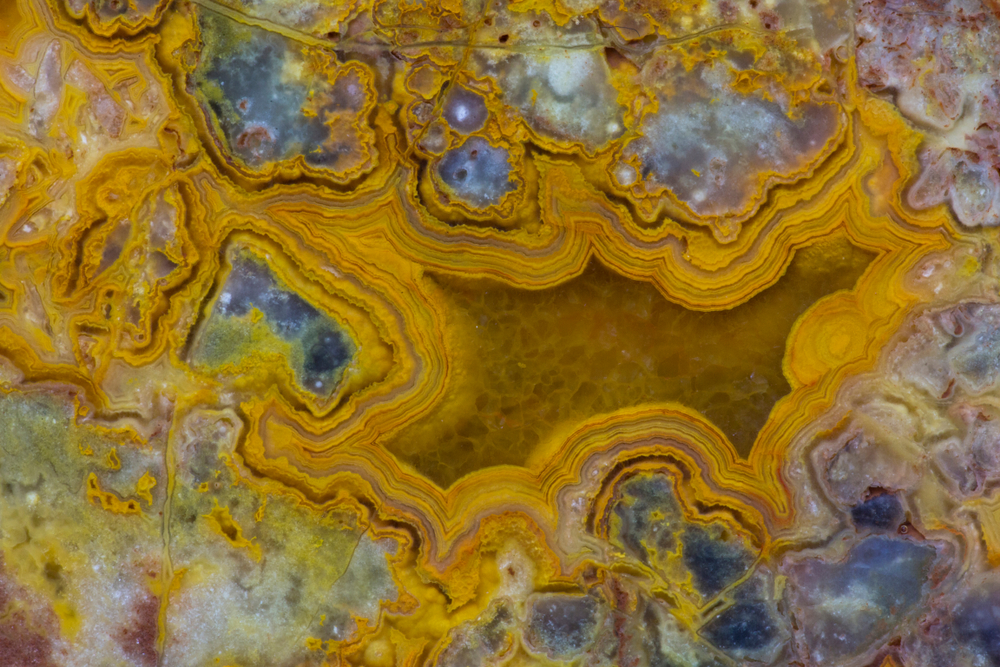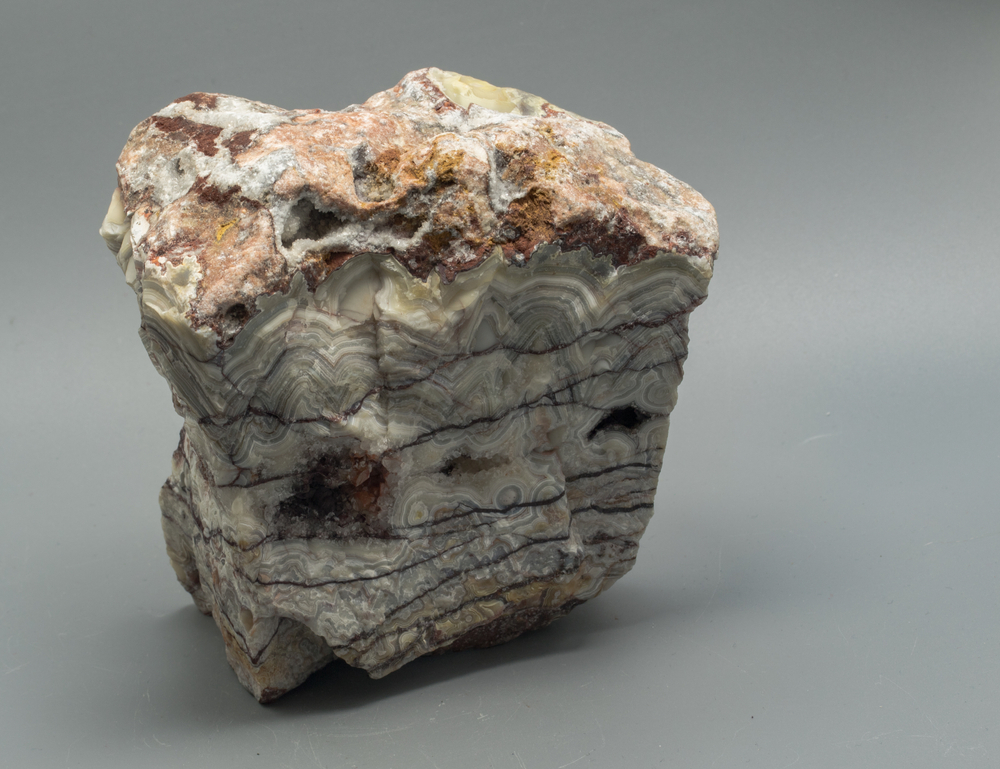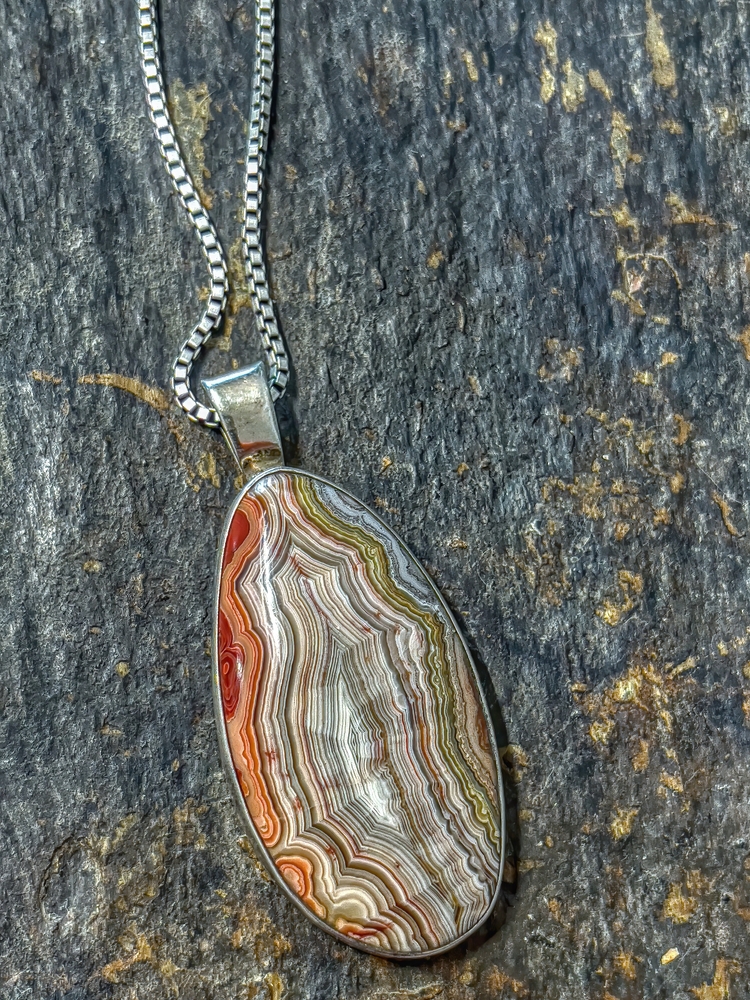Among the best-known varieties of banded chalcedony is the stone often known as Mexican Crazy Lace Agate. The hardness of the material makes it a joy to cut, while the intricate patterns have made it a favorite since the 1950s. This unique agate forms into many different patterns in many colors, but the stones generally have a common “theme.”
But what is it? Where is it found? How did it form? Let’s take a look in our guide to Mexican Crazy Lace Agate.
Related: Ultimate Guide to Turritella Agate (Origins, Locations, and More!)
What is Mexican Crazy Lace Agate?
Mexican Crazy Lace Agate, henceforth referred to as Mexican Agate, is a banded chalcedony variety. Like many agates, it’s found primarily in limestone. The nodules vary widely in color, but they generally have a few common patterns.

Specifically, you’ll find that these stones are largely fortification agates. This loose category of agates generally means that the banding in the stones will have sharp angles. Scattered among these layers of colored silica are orbicular patterns, consisting of concentric circles of color. This gives the stone the “lace” name, as it loosely resembles the intricate patterns of lace fabric.
Like all agates, Mexican Agate is comprised largely of cryptocrystalline silica. This is the same mineral that makes up quartz, but chalcedony is most often a mixture of quartz and its polymorph moganite at the microscopic level. The various impurities which make their way in are the source of the stone’s coloration.
These agates vary widely in color. While some material consists only of monochromatic white, grey, and black spots, others may bear green or blue bits. The most prized have red and pink worked into them, creating dramatic coloration. For most of us, the red variety is the first one that comes to mind.
Mexican Agates are found as both smoother nodules and in a botryoidal form. This latter form is comprised of small, intersecting spheres. These generally give you a good idea of where the orbicular portions of the stone are, making the rough easier to identify and work with.

How Did Mexican Agate Form?
These agates are thought to be between 65 and 95 million years old. They’re found in various limestone formations in Northern Mexico.
Agate formation isn’t 100% understood, but the general idea is that hot water seeps into empty pockets in the limestone bedrock. The hot water carries large amounts of silica, which deposit as the water slowly evaporates. It’s often thought that the water which forms them is closer to a gel due to the heat and pressure involved in their formation.
As time goes on, the agates will form in bands.
We’re still not quite sure if they form from the outside in or the inside out. Both theories have valid points, and the truth is that both could be true and it depends on the region in which they form.
Another theory holds that the silica forms a colloidal solution within the cavity and the separate layers are caused by differing particle sizes as the material cools over millions of years.
The various colors come from metallic ions that are present underground. For instance, red often comes from the same form of iron oxide which we generally call rust. Different concentrations lead to different shades and different metals lead to different colors.
Agate formation is still being studied, but the above should give you a general idea of how they form.
What is Mexican Lace Agate Worth?
Agates, while gorgeous, generally are only worth a few dollars per pound. Some reach a bit higher, but few actually reach true “gem” prices when rough.
Rough Mexican Agate is generally a bit more expensive than other varieties, but it doesn’t compete with materials like Ellensburg Blue or some of the mined-out varieties of stone found in other locations.
In general, it seems to run from $8-$15 per pound depending on the seller and the quality of the material. Slabs will generally run about the same as the per pound price (ie: $8-15 per slab) but can reach higher prices when they’re exceptional material.
Agate cabochons are essentially worth whatever someone will pay for them. It varies widely between different sellers, with US-based lapidaries generally being more expensive. Exceptional patterns can fetch large amounts per cabochon.
Where is Mexican Crazy Lace Agate Found?
Mexican Crazy Lace Agate is found in quite a few locations scattered across the Mexican state of Chihuahua. For the most part, it’s found in mountainous regions within the state, such as Sierra Santa Lucia.
For the most part, these stones are found in municipalities about halfway across the state, generally due south of Ciudad Juarez.
If you’re interested in rockhounding in the area, it’s best to find someone local to guide you. Mexico appears to be generally lenient when it comes to rockhounding, and some people have been known to take a car trip down there to collect, but you’ll want to make sure you’re aware of any local regulations that you may run afoul of.
It will also help to brush up on your Spanish before heading out, for obvious reasons.

Tips for Working With Mexican Agate
The main reason behind the popularity of Mexican Agate is it’s workability.
All true agates work slowly. Patience, and a lot of coolant, are pretty much a requirement of working with them. Apart from the occasional internal fracture, these agates tend to be very solid and there aren’t any real caveats to working with them.
My preferred grinding and polishing regimen with agates starts at 220 grit and works progressively to 1500 or 2000 before using cerium oxide paste for the final polish. This generally gives a mirror shine to good material, but if the silica isn’t quite up to par you may want to go up to 14000 or 50000 grit diamond paste.
This is a rather slow method, and you can start at 80 grit with this material if you prefer to be a bit more aggressive. I simply find that working it slowly allows for more time to ensure you’ve got the pattern you want and avoid grinding away details you’d prefer to keep.
The real key to getting attractive cabs out of this material begins with slabbing, however.

Selecting rough can be tricky. The internals of these agates are rather complex, with banding, orbs, and even plumes depending on the piece. It can be almost impossible to figure out what’s on the inside before you cut. The material is often sold “faced”, meaning that a slice has been cut off to give a clue as to the actual contents of the stone.
Any material with obvious fractures should be avoided, especially if you’re planning on making larger cabochons out of the material. Internal fractures do occur. But generally, cracked stones will have an outward sign.
Botryoidal portions of the stone often, but not always, point to the familiar orbicular or “bull’s eye” patterns. These can also be found inside some nodules, just because there isn’t a botryoidal side doesn’t mean the internal will only consist of fortifications.
Most people will want to cut against the grain of the stone. This shows off the internal “waves” or fortifications more readily. Don’t be afraid to experiment, however, as the material can show surprising patterns when cut in different directions.
Mexican Agate is also a good carving material if you lean that way. Just make sure to keep the material wet, since getting it too hot will cause fractures in the stone. It’s suitable for both relief carvings and for more complex, three-dimensional carvings due to the hardness of the material.
Also, as with any agate, make sure you’re wearing at least an N95 mask when working with it. The ultra-fine silica particles thrown off when working with the material will cause cumulative damage and, eventually, silicosis if proper precautions aren’t taken.
- Online rock and mineral club for collectors of all levels!
- Find community with like-minded rock and mineral enthusiasts.
- Monthly Giveaways!
- Free Access to Entire Digital Library of Products (annual memberships)


